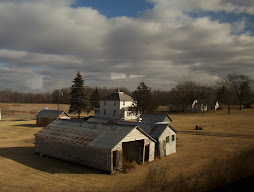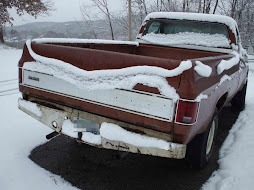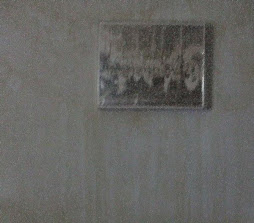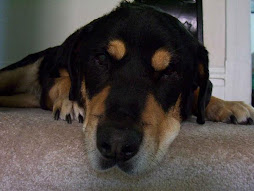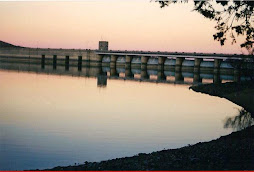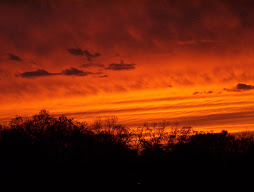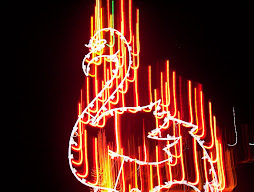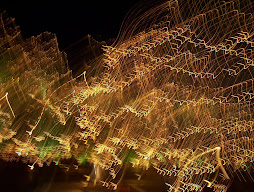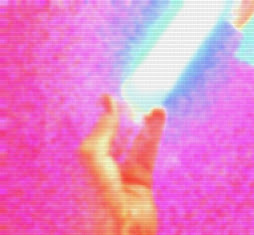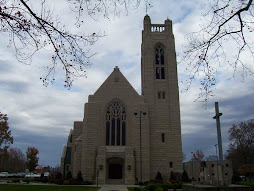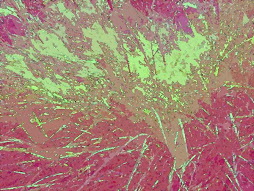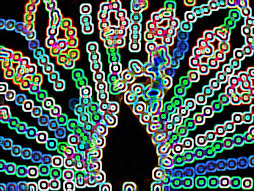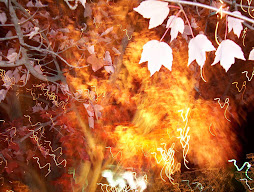skip to main |
skip to sidebar
O.J.'s son Jason did it, and O.J. was protecting him. Full video here: (One hour twenty minutes. Heavy handed and a little self congratulatory, but the premise and motive/narrative are Solid.)
Can you imagine the prosecution attempting to indict, much less prosecute O.J. had all this information been uncovered and disseminated during the investigation? Between Jason's rage issues, dead sibling, mental illness and institutionalization, previous assault history, hand to hand combat training, and more.. Everything presented about Jason Simpson points overwhelmingly towards his guilt. This information should have been part of the investigation, part of What We Were Told. But it wasn't.
After watching this video, I think Jason Simpson is guilty of the murders of Nicole Simpson and Ron Goldman, not O.J.. But don't take my word: Watch the video, then decide. The video is only up until April 29th, so hop to it..
Untrained labourers working in Japan’s nuclear industry
For decades, Japan’s nuclear power industry has claimed to be among the safest in the world, and presented itself as an icon of the technological prowess of Japanese capitalism. The radiation crisis at the Fukushima Daiichi plant since the March 11 earthquake and tsunami has exposed not only inadequate safety procedures, but the industry’s exploitation of untrained and low-paid casual labourers.
Nuclear plants in Japan hire thousands of temporary and contract workers to undertake the most dangerous and physically demanding duties. In order to avoid exceeding official radiation levels, these labourers must rotate frequently as they perform tasks such as cleaning off contaminated water from reactor drywells and spent fuel pools with mops and rags, or filling drums with contaminated waste.
Citing statistics from the Nuclear and Industrial Safety Agency (NISA), the official government regulator, the New York Times reported on April 9 that contract workers made up 88 percent of the 83,000 workers at Japan’s 18 commercial nuclear power plants. At the Fukushima plant, owned by the Tokyo Electric Power Company (TEPCO), 89 percent of the 10,303 workers were contractors, subcontractors and sub-subcontractors, whose wages and conditions were generally far worse than those of TEPCO’s regular employees.
Takeshi Kawakami, a 64-year-old former worker who worked at the No.1 reactor at Fukushima in the 1980s, told the newspaper that when exposed to radiation, he usually did not last 20 minutes. “It was unbearable, and you had your mask on, and it was so tight,” he said. “I started feeling dizzy. I could not even see what I was doing. I thought I would drown in my own sweat.” (This is the kind of bullshit corporate-malfeasance-to-homicidal-negligence that unions prevent. There doesn't seem to be too much of a Government Regulatory presence here, either. Understand now, these are not hypotheticals. They happened, and happened as a matter of course. This is how unregulated corporate entities behave toward individual workers, and without any unions to stand in the way, this is how they will continue to behave. As a matter of course..)
OMG JAPAN IS SINKING!! ..APRIL 10 2011 PEOPLE ARE WAY TOO RELAXED ( ASLEEP) You Tube via Rense.
Japan Mulls to Move Capital over Disaster Worries Curious. From Sofia News Agency(Bulgaria) via Rense. Excerpts:
As powerful earthquakes continue to jolt Japan and radiation levels near Tokyo are rising, the Asian country's authorities are considering moving the capital to another city.
The most probable location for a new capital are Osaka and Nagoya, according to ITAR-TASS. Both cities are located near international airports.
Toyota to halve Japan domestic production in May
Japan's Toyota Motor Co. said Friday it would operate all its domestic plants at half normal volume from May 10 to June 3, citing problems with parts supply following the quake and tsunami disaster.
..
A component supply crisis has strangled auto production in Japan and enforced a slowdown overseas in the wake of the March 11 disasters, and analysts say it will last several months amid continued power outages.
Tepco forced to compensate Fukushima evacuees Poor TEPCO, having to pay out so much hard earned cash to the thousands(Ultimately, millions) of people whose lives they've ruined. Sympathy, sympathy, sympathy.. Excerpts:
The Japanese government has ordered Tokyo Electric Power to pay compensation to 50,000 families forced to evacuate areas near the stricken Fukushima nuclear plant, the first significant pay-out in what is expected to be a costly financial relief programme.
Tepco, which operates the Fukushima Daiichi plant, must pay each family Y1m ($12,000), or Y750,000 in the case of single-person households, putting the total cost of the pay-out at upwards of Y50bn. An executive said the company aimed to make the first payments in early May, after the first applications are accepted on Apr 28\
Siemens reconsiders nuclear ambitions Interesting in light of the Stuxnet conspiracy.
Store blood cells from Fukushima workers - Lancet letter
A group of Japanese doctors on Friday urged workers at the Fukushima nuclear plant to have their blood stemcells stored as a safeguard should they be exposed to life-threatening levels of radiation.
The technique entails storing so-called autologous peripheral blood stem cells (PBSCs), which are immature cells that differentiate into blood cells.
PBSC transplants are often used in cancer treatment to boost depleted blood cell counts among patients who have had radiotherapy to destroy a tumour.
In a letter to the British medical weekly The Lancet, cancer specialists at four Japanese hospitals argued that it made sense to store blood from the hundreds of workers battling to save the Fukushima Daiichi nuclear plant from catastrophe.
You'll find this pretty exciting.. I'm looking forward to it.
Fukushima Falling Apart. Via Rense. Excerpts:
It’s been a month since the 9.0 Earthquake, tsunami, and the first of a series of explosions at the Daiichi reactors. Since that time, Japan has received 980 earthquakes and aftershocks: a number so staggering that it is almost incomprehensible. Numerous explosions have occurred as well, and every day it seems the Japanese nuclear and government official reveal a little more about the true nature of the on-going tragedy at Fukushima.
..
A second JAIF press release is more concerning and revealing. If we read the fine print, we can note that “NISA announced that the reactor pressure vessel of Unit 2 and 3 may have lost air tightness because of low pressure inside the pressure vessel. NISA told that it is unlikely that these are cracks or holes in the reactor pressure vessels at the same occasion. (What?)
Nitrogen gas injection into the Unit 1containment vessel has been continued to reduce the possibility of hydrogen explosion since Apr. 6th. The pressure of the vessel has hardly risen for the past a few days and leakage of the vessel is suspected. The same measure will be taken for Unit 2 and 3.”. It appears that the reactors are continuous leaking, not too surprising given the hydrogen explosions that have rocked the reactors, but here a first confirmation of cracks within the reactors.
While the NHK and the Japanese Educational site on the Nuclear disaster keep us updated on #1 reactor’s pressure, their perception of it is that is has flat-lined. That perception is in sharp contrast to our own view. The current reactor pressure for #1 is 0.908 Mega pascals: a number nine times atmospheric pressure. If it’s cracked, as they Japanese say it is, it may be a double-edged sword. Pressure is being released, but it’s also massively building up.
Hidehiko Nishiyama, a spokesperson for a nuclear agency seems to continue to be wildly optimistic given the circumstances. “Even though some amount of radiation keeps leaking from reactors and their containment vessels, they are not totally destroyed and are functioning” I’m glad that other Japanese are being more transparent in their assessment. I can’t imagine anyone taking the view that they are functioning. In what possible way?
Russia's nuclear chief says Japan exaggerating crisis Huh.
SANYA, China — Japanese authorities may be exaggerating the scope of the country's nuclear disaster to reduce the liabilities of insurance companies, Russia's nuclear chief said on Wednesday.
..
"It is hard for me to assess why the Japanese colleagues have taken this decision. I suspect, this is more of a financial issue, than a nuclear one," Sergei Kiriyenko said on the sidelines of a meeting of major developing economies in southern China.
..
"I guess that maybe it could be linked to the definition of force-majeure with regard to insurance. I would pay attention to that. It is a bit strange," Kiriyenko said without further elaboration.
And:
Several experts have agreed that Japan's new rating exaggerated the severity of the crisis and did not compare with Chernobyl, which blew the roof off a reactor and sent large amounts of radiation across Europe.
Kiriyenko said the damaged plant should have initially been ranked at a 5 or 6, a level he said still matched the severity of the leaking radiation given the current low risk of a blast.
Kiriyenko's agency, Rosatom, is building a slew of reactors at three sites in energy-hungry India, which plans to fuel economic growth with 63,000 megawatts of nuclear power by 2032.
Tsunami Risk Prompts Tepco to Move Fukushima Backup Power to Higher Ground
Tokyo Electric Power Co. will move backup generators at its crippled nuclear plant to higher ground away from the sea to ensure cooling systems aren’t disrupted by future tsunamis, as aftershocks rattle Japan.
“Emergency diesel-powered generators will be moved to higher ground, and work for connecting them into the power distribution unit will be carried out around April 19,” Takeo Iwamoto, a spokesman for the utility known as Tepco, said in Tokyo today. They will be placed 20 meters (66 feet) above sea level, double the current height, according to the company.
Aftershocks Threaten More Damage to Crippled Japan Nuclear Plant Excerpts:
Aftershocks rattling Japan after the nation’s record quake on March 11 may continue for at least six months, increasing the risk of damage to a crippled nuclear plant at the center of the worst nuclear crisis since Chernobyl.
“Aftershocks as big as magnitude-7 are likely to continue hitting in eastern and northern Japan for at least six months,” said Teruyuki Kato, a professor at the University of Tokyo’s Earthquake Research Institute.
Japan defends holding back nuke data Excerpts:
Official says high March radiation level hidden to avoid panic.
Japan's new assessment was based largely on computer models showing very heavy emissions of radioactive iodine and cesium on March 14-16, just after the earthquake and tsunami rendered the plant's emergency cooling system inoperative. The nearly month long delay in acknowledging the extent of these emissions is a fresh example of confused data and analysis from the Japanese, and put the authorities on the defensive.
Burial of Japan reactors trickier than Chernobyl: pump firm Excerpts:
AICHTAL, Germany — Encasing reactors at Japan's Fukushima nuclear plant in concrete would present much more of a challenge than Chernobyl, according to an executive of the firm whose pumps are helping cooling efforts there.
"In Chernobyl, where a single reactor was encased, 11 trucks were in action for a number of months. In Fukushima we're talking about four reactors," Gerald Karch, chief executive of the technical business of unlisted machinery maker Putzmeister, said in an interview with Reuters.
..
"In my opinion, when a closed-circuit cooling system has been developed and successfully set up, there will be no other option but to encase the reactors in concrete," he said.
Radioactive materials detected in more Chinese vegetables
China's Ministry of Health said Wednesday that "extremely low levels" of radioactive isotope iodine-131 had been detected in various kinds of vegetables in 12 provincial regions.
The radioactive isotope was found in spinach, asparagus, lettuce, cabbage, Chinese cabbage and other vegetables in Beijing, Tianjin, Hebei, Shanghai, Jiangsu, Zhejiang, Shandong, Henan, Hunan, Guangdong, Guangxi and Hainan, according to a statement from the ministry.
"The detected amounts pose no threat to public health," said the statement, adding that a sample survey indicated no abnormality in drinking water. On both counts: Of course not.
Shock as Japan admits nuclear leak could be worse than Chernobyl
JAPANESE officials have admitted that the nuclear crisis in Fukushima could become worse than Chernobyl.
Officials said the total leak from Fukushima so far amounted to a 10th of the radiation emitted from Chernobyl, but could yet (Read: will soon.)eclipse the Ukraine disaster.
..
The decision to upgrade the accident to the highest threat level was the subject of international criticism after Japan admitted delaying the announcement.
Workers at stricken Japan nuclear plant make a little progress
Workers Wednesday were a step closer to emptying highly radioactive water from a crippled reactor, which would allow them to start repairing the cooling system crucial to bringing one of the world's worst nuclear crises under control.
U.S. Nuclear safety regulator Gregory Jaczko described the crisis at the Fukushima nuclear plant as "static" rather than stable, because of the continuing struggle to cool the reactors badly damaged by a 15-meter tsunami on March 11, which was triggered by the biggest quake in Japan's recorded history.
..
It is expected to take months before the damaged reactors will be cool enough. Some officials have speculated that the authorities may have to entomb the plant if the crisis drags on too long, the solution that was eventually used to close off Chernobyl.
High radiation levels in sea off Fukushima coast Via Rense. Excerpts:
The science ministry says radiation levels in seawater off the coast of Fukushima Prefecture are the highest since it began monitoring them about 3 weeks ago.
The ministry says the level of iodine-131 was 88.5 becquerels per liter in a sample taken on Monday in the sea about 30 kilometers east of the Fukushima Daiichi nuclear plant. The figure is 2.2 times the government's upper limit for waste water from nuclear facilities.
And:
Radiation levels are higher in the sea to the north of the crippled plant.
The government's Nuclear and Industrial Safety Agency says radioactive substances seem to be flowing and diffusing northward.
File Under: Are you shitting me? Edano: No need to change Fukushima response. Via Rense.
Japan's top government spokesman says there will be no change in the way the crisis at the Fukushima Daiichi nuclear power plant is being handled.
..
Edano stressed that raising the crisis level does not mean the situation is worsening. He said the upgrade was not due to a new emergency, but is based on the latest analysis of data.
Aftershocks Continue to Pummel Japan
It's not unusual, then, to read about the aftershocks of an earthquake; what's unique about the aftershocks in Japan, however, is their severity. Even a month later, quakes measuring greater than 5.0 on the Richter scale continue to be felt. While many of them are occurring well off of the coast of Japan, enough of them have been close enough to cause injuries, fatalities, damages and power outages. The beleaguered Fukushima Daiichi nuclear power plant, for one, was temporarily evacuated after a large aftershock on Monday caused extensive power outages.
..
Due to the intensity of the original earthquake, exceptionally powerful aftershocks could continue for several months. Minor aftershocks, including ones that aren't even perceptible to humans, could keep happening for many decades to come. For the earthquake- and tsunami-wary people of Japan, the continuing geological activity is doubtlessly stressful and upsetting. Search and rescue missions are also ongoing, although hope is fading fast for any additional would-be survivors.
Chernobyl and Fukushima: a tale of two disasters
Categorisation can sometimes have a dramatic effect on how we perceive the world, and to learn yesterday that the nuclear debacle at Fukushima now officially ranks alongside that of Chernobyl in terms of seriousness appears to be an ominous worsening of the situation in Japan.
And:
How do the two incidents compare? Although Fukushima has spilt a lot of radioactivity into the environment, the full amount is still thought to be far below the amount released in the accident at Chernobyl 25 years ago.
Using the common measure of "terabecquerels", it is thought that about 500,000 to 600,000 terabecquerels of radiation has so far been released from the damaged Fukushima reactors, whereas Chernobyl is thought to have released between five and six million terabecquerels, about ten times as much. (Again, an Apples and Oranges argument. Chernobyl: One reactor; contained. Fukushima: Four--potentially six-- reactors, ongoing.)
Japan economy to take hit from quake, nuke accident
Japan cut the outlook for its economy on Wednesday for the first time in six months, saying last month's devastating quake and tsunami would hurt growth, with no sign yet when the nuclear crisis they triggered might be brought under control.
..
After recent fears of possible contamination in the region, neighboring China said that the impact there had been small, noting the amount of radiation was about one percent of what it had experienced from the world's worst nuclear disaster at Chernobyl.
The total cost of the March 11 triple disaster has been estimated at $300 billion, making it the world's most costly natural disaster.
Nuclear engineer Arnie Gundersen demonstrates how Fukushima's fuel rods melted and shattered
Video
Pakistan Tells U.S. It Must Sharply Cut C.I.A. Activities
ISLAMABAD, Pakistan — Pakistan has demanded that the United States steeply reduce the number of Central Intelligence Agency operatives and Special Operations forces working in Pakistan, and that it halt C.I.A. drone strikes aimed at militants in northwest Pakistan. The request was a sign of the near collapse of cooperation between the two testy allies.
When it ends, this alliance will not end well..
Japan raises nuclear alert level to seven Found it on Rense. Excerpts:
Japan is to raise the nuclear alert level at the Fukushima Daiichi power plant to a maximum seven, putting the emergency on a par with the 1986 Chernobyl disaster.
Nuclear safety officials had insisted they had no plans to raise the severity of the crisis from five – the same level as the Three Mile Island accident in 1979 – according to the international nuclear and radiological event scale.
But the government came under pressure to raise the level at the plant after Japan's nuclear safety commission estimated the amount of radioactive material released from its stricken reactors reached 10,000 terabecquerels per hour for several hours following the earthquake and tsunami that devastated the country's northeast coast on 11 March. That level of radiation constitutes a major accident, according to the INES scale.
The scale, devised by the international atomic energy agency, ranks nuclear and radiological accidents and incidents by their severity from one to seven.
Japan orders extra nuclear safety step as aftershocks jolt Excerpts:
Japan has ordered nuclear plant operators to put in place new safety measures by April 28 in addition to steps imposed late last month that are soon due for checks by authorities to confirm implementation, the trade ministry said, as another series of aftershocks on Monday jolted the eastern region.
There has so far been no serious damage reported at five nuclear plants in northeast Japan, including the crippled Fukushima Daiichi plant, as a result of Monday's magnitude-6.6 earthquake.
The ministry's Nuclear and Industrial Safety Agency (NISA) on Saturday ordered nuclear power companies to install at least two emergency diesel engines even at reactors that are not in operation and are kept at low temperatures, such as at the Higashidori plant.
All reactors, whether being operated or shut for maintenance or other reasons, need power to run their cooling functions for fuel rods located in pressure vessels and spent-fuel pools.
More Obstacles Slow Crews In Japan Nuclear Crisis Excerpts:
Emergency workers continue to run into problems at Japan's stricken nuclear complex. Workers are trying to remove the radioactive water from the tsunami-ravaged compound and restart the regular cooling systems for the dangerously hot fuel.
Officials still don't know where the radioactive water is coming from, though government spokesman Yukio Edano (YOO'-kee-oh EHD'-ah-noh) has said some is "almost certainly" seeping from a damaged reactor core in one of the units.
Explained: rad, rem, sieverts, becquerels A guide to terminology about radiation exposure
Chilling example of liquefaction's effect on reclaimed land.. under a portion of a megalopolis. Imagine walking around on land you knew was recently created where water once flowed, conscious of the hundreds of thousands of people around you, also unsure of what's next, walking on, near, and though untold tons of concrete, large, continuous cracks forming everywhere..
And you know for sure: The ground has begun to give.
Another earthquake strikes northeast Japan Excerpts:
Another powerful aftershock struck near Japan's crippled Fukushima nuclear plant on Tuesday afternoon, shaking buildings in Tokyo.
The US Geological Survey (USGS) said the quake, which struck at 2.47pm local time (1547 AEST), had a magnitude of 6.0 and hit less than 11 kilometres below ground.
Japan has experienced more than 400 major aftershocks stronger than 5.0 in magnitude since the 9.0 earthquake which unleashed a devastating tsunami on March 11.
One Month After Disaster, American Red Cross Donations To Japanese Red Cross To Reach $100 Million
Magnitude 7.1 - NEAR THE EAST COAST OF HONSHU, JAPAN
23 km (14 miles) SW (223°) from Iwaki, Honshu, Japan
65 km (40 miles) NNE (19°) from Mito, Honshu, Japan
94 km (58 miles) SSE (166°) from Fukushima, Honshu, Japan
164 km (102 miles) NNE (32°) from TOKYO, Japan
7.1 Earthquake Fukushima Japan april 11 2011 TSUNAMI WARNING Video from NHK. Found it on Godlike Productions.
Breaking news: 7.1 intensity quake hits Japan
Sendai, Japan: A magnitude-7.1 aftershock has rattled Japan on the one-month anniversary of a massive earthquake that spawned a deadly tsunami.
It is exactly a month since the killer quake and tsunami that killed up to 25,000 people and unleashed a persistent nuclear crisis.
BREAKING NEWS: Exactly a month on, another earthquake strikes off Japan's coast as nation holds memorial services (Photos)
Japanese Experts: Effort is in danger of failing… and reactors too hot to cover in concrete — TEPCO admits there is no end in sight Found it on Rense.
Excerpts taken from sourced material from CNN:
Satoshi Sato, a Japanese nuclear industry consultant, called the current line of attack a “waste of effort.” Plant instruments are likely damaged and unreliable because of the intense heat that was generated, and pumping more water into the reactors is only making the contamination problem worse, he said.
“There is no happy end with their approach,” Sato told CNN. “They must change the approach. That’s something I’m sure of 100 percent.”
After the 1986 Chernobyl accident, the world’s worst to date, the Soviet Union encased the plant’s damaged reactor in a massive concrete sarcophagus. Iida said Fukushima Daiichi’s reactors remain too hot to pour concrete, but he suggested pouring a slurry of minerals and sand over them to carry away heat before encasing them.
TEPCO uses unmanned equipment to remove rubble NHK via Rense.
Tokyo Electric Power Company has begun using unmanned heavy equipment to remove radioactive rubble at the tsunami-hit Fukushima Daiichi nuclear plant.
Hydrogen explosions blew off the ceilings and walls of the Number One and Number Three reactor buildings. The debris is emitting hundreds of millisieverts of radiation per hour in some places, hindering the restoration work.
Operators are using cameras attached to the equipment as well as 6 fixed cameras at the site to carry out the work from hundreds of meters away.
Planting marijuana in Fukushima could help eliminate radiation Thread from Godlike Productions. Is there anything Weed can't do?
Japan marks one month since quake From Al Jazeera. Excerpts:
The country is still struggling to calculate the losses from the 9.0 magnitude quake on March 11. Over 13,000 people are confirmed dead and 14,000 more are still missing, while more than 150,000 remain homeless in emergency shelters. Key infrastructure in several towns is battered, and it seems that reconstruction can be months, if not years, away.
In addition to flattening communities along hundreds of kilometres of coastline, the government has estimated the cost of the damage at up to $310bn.
And:
Engineers at the damaged plant north of Tokyo said on Sunday they were no closer to restoring the plant's cooling system, which is critical if overheated fuel rods are to be cooled and the six reactors brought under control.
They are hoping to stop pumping radioactive water into the ocean on Monday, days later than planned.
Four weeks after the worst nuclear crisis since Chernobyl, a quarter of a century ago, the government was moving to extend a 20km evacuation zone due to high levels of radiation, the Asahi newspaper reported.
The Japanese government has so far refused to widen the zone, despite being urged to do so by the International Atomic Energy Agency and countries like the United States and Australia. The IAEA and the two countries advised citizens to stay 80km away from the plant.
The Asahi newspaper said the government would extend the zone to 30km in certain areas, depending on wind direction, and residents would be given a week to prepare for evacuation.
TEPCO boss visits nuclear disaster zone to say sorry This really isn't enough. The protocol of "Going down with the ship" needs to return to practice. Put the TEPCO executives in the Exclusion Zone for the duration of the disaster. If that were to happen, we'd see some world class ass bustin' when it comes to fast and thorough disaster response...
Minister defends Japan’s crisis response
A top government official defended Japan’s response to the humanitarian and nuclear crises set off by last month’s natural disasters, saying yesterday that the scale of the earthquake and tsunami that killed thousands and damaged a nuclear power station far surpassed what specialists had planned for. ("Nobody told us it was gonna be that big! What do our Safety Experts know?")
Responses to disasters are rarely perfect, said Yukio Edano, the chief Cabinet secretary. But given the enormity of the catastrophe, which included the largest earthquake ever recorded in Japan and a historic tsunami, the government has done all that it could, he said.
“I believe we have selected the best option every time’’ a new decision had to be made, he said in an interview with several foreign news outlets.
Edano said the Fukushima Daiichi Nuclear Power Station is “a stable situation, relatively speaking,’’ but that much work remains before the damaged reactors, which are emitting high levels of radioactivity, are fully under control.
Japan continues grim search for the dead in earthquake, tsunami ruins [PHOTOS]
With thousands of bodies yet to be found, Japanese troops on Sunday launched a new search. 22,000 Japanese troops were also joined by 100 US troops in the search in the Iwate, Miyagi and Fukushima prefectures, CNN reported.
Japan Orders Nuclear Plant Operators to Obtain More Emergency Generators
Radiation readings spiked sharply in one reactor at the stricken Fukushima Daiichi nuclear plant after a powerful aftershock late Thursday, according to data released by the government, a development that might indicate new damage to the already compromised reactor.
But the plant owner, the Tokyo Electric Power Company, said the gauge used to measure radiation was most likely broken.
The high radiation was measured in the drywell of Reactor No. 1, directly below the reactor pressure vessel and part of the primary containment that is a crucial barrier preventing the escape of radioactive materials. The drywell reading raised the worrisome possibility that highly radioactive water had escaped, and perhaps even material from the nuclear core, although this was far less likely.
New Video Shows Disaster at Fukushima Nuclear Plant; Japan Tightens Regulations Excerpts:
Newly released video of Japan's March 11 earthquake and tsunami is giving the world a better look at its devastating impact on the Fukushima Daiichi nuclear plant.
The brief clip put out by the Tokyo Electric Power Company Saturday shows a wall of water slamming into the plant, easily overwhelming the facility's protective seawall.
The release of the video clip comes the same day Japanese officials announced they were requiring the country's nuclear facilities to take additional precautions.
Heartening. These additional precautions are the game changer we've been waiting for! Wait.. No..
Yeah.. Where are the robots? Robots absent from Japan’s radiation battle
In the battle to contain radiation spewing from Fukushima Daiichi nuclear station, Japanese authorities have deployed helicopters, riot-police water cannon and a 58-metre steel hose-arm normally used to spray concrete into high-rise construction sites.
Yet one sort of equipment has been notably absent from the effort: robots.
The four-week-old nuclear crisis would seem like a perfect showcase for Japan’s advanced robotics industry. Human technicians at Fukushima are suffering from injuries and exhaustion, and have been prevented from carrying out critical repair work by dangerous levels of radiation. What, then, would be more welcome than a fleet of remote-controlled mechanical drones?
Yet in reality, robots capable of responding to nuclear accidents are thin on the ground in Japan – a reflection, experts say, of both the limits of current robotics technology and of power-plant operators’ reluctance to invest in improving it.
Japan’s own small compliment of nuclear-response robots – two remote-operated devices that can take video and measure radiation – have been sent to the site but have not been used..
Getting rid of Japan's stricken nuclear plant will take decades, vast sums of money
Once Japan's leaky nuclear complex stops spewing radiation and its reactors cool down, making the site safe and removing the ruined equipment is going to be a messy ordeal that could take decades and cost hundreds of millions of dollars.
Radiation has covered the area around the Fukushima Dai-ichi plant and blanketed parts of the complex, making the job of "decommissioning" the plant — rendering it safe so it doesn't threaten public health and the environment — a bigger task than usual. (Understatement, much?)
..
That timeline is far faster than those for other nuclear accidents and contains a big caveat: The reactors must first be stabilized and cooled, goals that have eluded emergency teams struggling with cascading problems in the month since the devastating tsunami damaged their cooling systems. Omori said the extent of damage to the reactors and other problems still need to be assessed.
..
Though an avid user of nuclear power with 54 plants, Japan has little experience in decommissioning and none involving problematic reactors. The first, the Tokai Power Station's No. 1 reactor, is 13 years into a 22-year process. Its fuel rods have been removed, and its turbines and other equipment are being dismantled while the reactor is isolated, its vents and ducts closed.
And: Why Fukushima will ultimately be much worse than Three Mile Island and Chernobyl combined..
Unlike Three Mile Island and Chernobyl, where problems were confined to one reactor each, Fukushima has three active reactors that are not cooling properly and at least one of which may be leaking, and four storage pools for spent fuel which have overheated, some to dangerous levels.
Nuclear Regulatory Commission: Watchdog or Lapdog?
Internal government watchdogs and outside experts alike say the U.S. Nuclear Regulatory Commission is too lenient on the industry it is charged with regulating, often making decisions based on the industry's profit margins rather than public safety.
The charges are similar to complaints leveled against the Mine Health Safety Administration and the Minerals Management Service over the past year, after high-profile tragedies -- the Upper Big Branch Mine collapse and the Deepwater Horizon spill -- in the industries they are responsible for regulating.
In the wake of the events in Japan, there is a heightened sense of concern throughout the United States that a similar meltdown could occur, particularly in New England where reactors similar to those in Japan remain in operation.
It's not so much a Public Relations disaster as it is death pangs from a huge segment of Japan's export portion of their economy. The neighbors are nervous and will find the necessary excuses to block much more Japanese food in the very near future..
Powerful Aftershock Rocks Japan New problems at a new nuclear power plant. Excerpts:
Measuring 7.1 (one or more other reports said 7.4), rocked northeast Japan, causing more damage and disruption to a devastated area. It cut electricity to four million homes, disrupted power at two nuclear facilities, and according to Kyodo News:
"Radioactive water spilled from pools holding spent nuclear fuel rods at the Onagawa power plant in Miyagi Prefecture," according to Japan's Nuclear and Industrial Safety Agency (NISA).
For up to 80 minutes, power was lost at Onagawa and the Higashidori nuclear facility. "A small amount of contaminated water spilled on the floor (inside) all three (Onagawa) reactors....In all, water spilled or leaked at eight sections of the plant," also run by Tokyo Electric (TEPCO). In addition, blowout panels designed to control pressure were damaged in reactor number three's turbine building, TEPCO saying a complete damage assessment was ongoing.
And:
As always, they say damage, new or earlier, poses no dangers. Already, in fact, Fukushima caused potentially apocalyptic ones, covered up to conceal their gravity, extending far beyond Japan and the Pacific rim.
..
His main conclusion was that "the full accident hazard of each type nuclear power reactor has not been scientifically established, even for the most likely of serious accidents.
"Specifically, "the theory underlying the industry's safety calculations has not been experimentally verified, nor are the necessary experiments planned....This shortcoming is one of the two chief concerns of this book."
"The other, and more important, concern is that there are accident possibilities not considered for licensing which are more severe than the design basis accidents and that these have not even been theoretically investigated for the course they each could take...."
In other words, reactor containment systems aren't designed for the worst potential accidents. As a result, each operating reactor anywhere "appears to have an enormous potential for public disaster."










































